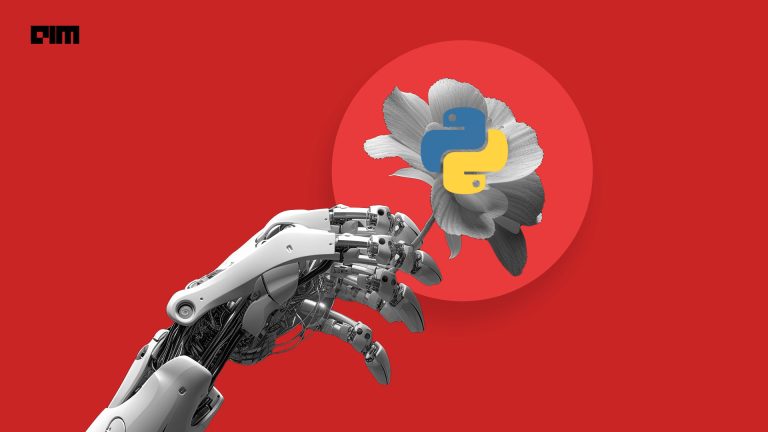Even though other frameworks like PyTorch (developed by Facebook) has gained wide popularity, TensorFlow remains one of the most sought after deep learning frameworks of all time. Developed by researchers and engineers from the Google Brain team, it is the most commonly-used software library which holds the largest popularity on GitHub.
Some of its features such as community and support, ease of use, industry relevance, embedded computer vision and others often stand out when compared to other frameworks. With TensorFlow 2.0 there has been newer and better improvements such as more straightforward APIs, streamlined Keras integration, eager execution option, among others, making it even more popular and in-demand. Other factors such as its distributed training support, scalable production deployment options and support for various devices such as Android, also contribute towards its popularity.
The popularity for TensorFlow suggests that it is not going anywhere anytime soon and is going to remain popular for years to come. While there are many utilities and features because of which TensorFlow wins the game, we list a few reasons here as to why it is one of the fastest growing DL frameworks.
Support for multiple languages: TensorFlow can support multiple languages to create deep learning models. Some of the languages that it supports are Python, C++, Java, Go, R. Currently, the best-supported client language is Python.
Flexible architecture: One of the other reasons why it is popular is because it is designed for large-scale distributed training and inference. It is also flexible enough to support experimentation with new machine learning models and system-level optimizations. The flexible architecture of TensorFlow enables users to deploy deep learning models on one or more CPUs (as well as GPUs).
Ease of use across various platforms: It can be used on platforms such as Linux, MacOS, Windows, Android. Even Keras can be used as an interface for TensorFlow. With TensorFlow 2.0, it allows robust model deployment in production on any platform.
Updates and features: It has the advantage of seamless performance, quick updates & frequent new releases with new features. There is also an effort to reach out to the community. TensorFlow ensures that there is a vast amount of content, code, tutorials, and support for users to get an understanding of TensorFlow. The fact that it is accessible to everyone makes it one of the favourites.
Scalability: It can be deployed on a gamut of hardware machines such as cellular devices and computers with complex setups. It can incorporate different API to built at scale deep learning architectures such as CNN or RNN.
Tensorboard visualisation: TensorFlow is based on graph computation and has a great visualisation tool for training. It allows developers to visualise the construction of the neural network with Tensorboard. Tensorboard visualisation makes it very easy to visualise and spot problems.
Debugging: Tensorboard is also an effective tool to debug the program. It lets the user execute the subparts of graph allowing to introduce and retrieve discrete data onto an edge, thereby offering a great debugging method.
Dynamic graph capability: TensorFlow has a feature called Eager execution that allows adding the dynamic graph capability. TensorFlow allows saving the entire graph (with parameters) as a protocol buffer which can then be deployed to non-pythonic infrastructure like Java. This again makes it one of the favourable tools and is extremely easy to deploy.
TensorFlow Will Keep Growing
While the above-discussed pointers are some of the factors why TensorFlow has a huge following amongst the developer community, there is no doubt there are many who believe it will continue to remain one of the most used frameworks for Deep Learning. The reason that TensorFlow keeps growing is because of the steps that it takes to make itself more approachable to the developer community. It has recently undertaken moves such as open sourcing TensorFlow Lite for mobile devices and two development boards Sparkfun and Coral.
Deep Learning on smartphones is something that is still new and Tensorflow somehow seems to have figured it out on how to make lighter versions for handheld devices.
Moreover, TensorFlow 2.0 has put TensorFlow on the top of the game. There are many user-friendly approaches that have been introduced that makes it much more likeable than ever before.
For instance, TensorFlow 1.X required users to manually stitch together the graphs by making tf.*API calls. But TensorFlow 2.0 executes eagerly, and graphs and sessions will be more like implementation details. This eliminates the use of tf.control_dependencies(), as all lines of code execute in order.
If a data scientist wasn’t part of this initial stages of building a pipeline, it would be difficult for them to recover something that they never knew existed. TensorFlow 2.0 eliminates all of these mechanisms in favour of the default mechanism i.e if the user loses track of the variables; tf.Variable, it gets garbage collected.
Here are the key announcements that were done around TensorFlow 2.0.
Here is an article to know how to make the most of TensorFlow 2.0



















































































